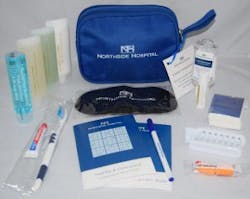What is global sourcing and how can it impact your value analysis team?
How Value Analysis Teams (VAT) can improve overall quality, reduce costs and positively impact patient experience by engaging in global sourcing. /
Part One – What is global sourcing and how can it impact your VAT?
Many of America’s leading hospitals and IDNs including New York-Presbyterian, ROI Mercy, Northside Hospital (Atlanta) and Westchester Medical Center Health Network have implemented global sourcing programs to improve the quality of products while driving significant cost savings. If your VAT is not familiar with global sourcing, they should be. Here’s why.
What is global sourcing and how can it impact your VAT?
Global sourcing describes the practice of acquiring thousands of common hospital products directly from manufacturers worldwide. Today, whether you realize it or not, 50% of the commodities used in a hospital are not actually made by the company whose brand name is on the product. By leveraging global sourcing and going directly to the factories, value analysis teams can play a role in developing clinically superior instead of clinically acceptable products while significantly reducing cost at the same time. VAT teams can choose customization and a long list of options for thousands of products compared to your legacy distributors’ list (not to mention eliminating the associated 20-50% markups on price). You can also make a measurable, positive contribution to improvements in the patient experience, patient communication and HCAHPS scores.
In short, you can get clinically superior products at the lowest possible price while also enhancing the patient experience by incorporating global sourcing into your VAT strategy.
Do you want to improve quality and increase standardization while reducing cost?
The cost of many hospitals supplies includes an upwards of 20-50 percent markups on products that come from many of the same factories available to you through global sourcing.
As our colleague Jim Connor, VP of Supply Chain with Westchester Medical told us, “Hardly anyone will tell you what [a med/surg product] costs to acquire throughout its supply chain lifecycle. I need partners for items I’m acquiring in high volume that must be consistently of very high quality, with full cost transparency.”
By insisting on visibility into the full cost of acquisition all the way back to the factory, the VAT committee can take quality and financial control back from the middlemen and set value-based improvements within their supply chain into action.
In just one example out of 33 products in Westchester’s global sourcing program, the team consulted with the clinical staff to source a new digital thermometer. The result: “With our sourcing partner, ASP Global, we generated a better product at half the price,” Connor says. “We save $70,000 per year on that product alone and trimmed three SKUs down to one.”
Example of improving clinical utility, your VAT can do the same
Earlier this year, Marc Prisament, Director of Product Development and Global Sourcing for New York -Presbyterian told us, “When the health system changes the sourcing for a product, our ‘clinical improvement team’ participates in the decision-making process, which often results in winning scenarios in terms of both maximizing value and standardization.”
This scenario played out effectively when New York-Presbyterian began direct sourcing of operating room jackets, which included changes to reflect the preferences of NYP’s OR clinicians.
“They didn’t like the snaps. They didn’t like the length.” By leveraging high volume purchases with a new manufacturer [through global sourcing], NYP combined the preferences of OR clinicians from all of the hospital’s nine campuses. “There’s now only one product to buy, stock, and distribute,” Prisament said.
Global Sourcing will improve customization, branding and the patient experience
From admission all the way through discharge, what are you saying to your patients with the products you hand them? Exactly how should the blanket you offer to a new mother and her newborn child feel? Does your distributor provide exactly what you need or want in the product? Or would you rather tell the person actually making the item what you are trying to communicate to the patient so that they can understand exactly what it means to you including how it needs to look and feel?
“Our patient amenity and branded items are going to determine, at least in part, how we are perceived and measured including our HCAHPS scores,” Connor said. “We are using global sourcing to ensure the quality of those [products] are high while keeping costs low.”
Kathy James, clinical supply chain manager with Northside Hospital (Atlanta) says, “It’s the little things that make big differences in the lives of the patient. So while there are many commercially available products we could have had relative to our patient comfort kits, we wanted it to be part of a personal experience. All of these efforts to improve the quality and utility of our hospital branded, patient amenity and other products [in our global sourcing program] have done nothing but improve our HCAHPS scores.
“When we started the process of custom designing our amenity kits we did not realize how much more of a personal connection we could make with our patients, and what surprised us more than anything was how many middle layers of cost we could remove by going direct. As a result, we’ve gone to a more direct sourcing model on other items and are looking to grow.”
Over the next two months, we will provide insight to how global sourcing can positively impact your VAT goals.



